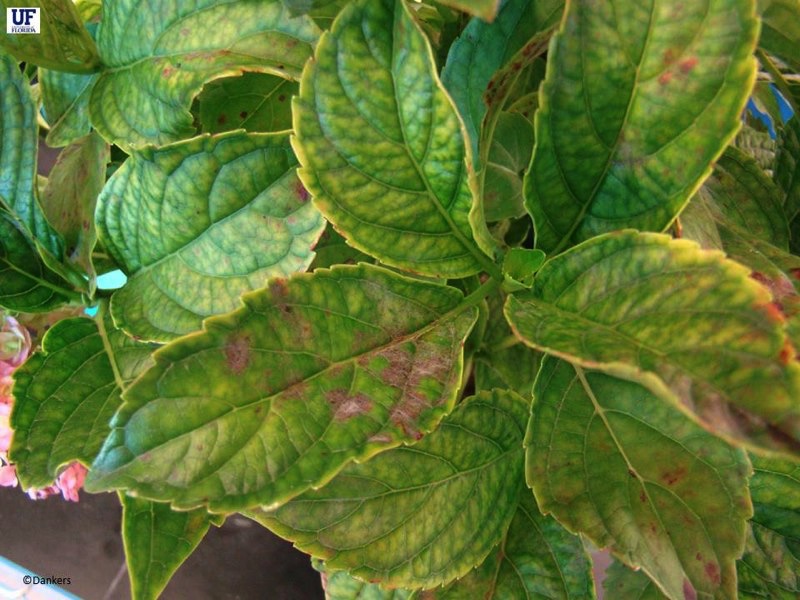The Greatest Guide To Hydrangea Leaves Turning Yellow
Table of ContentsThe smart Trick of Hydrangea Leaves Turning Yellow That Nobody is Talking AboutWhat Does Hydrangea Leaves Turning Yellow Do?Rumored Buzz on Hydrangea Leaves Turning YellowHydrangea Leaves Turning Yellow - An Overview
These problems are very easy to recognize and deal with if you take actions prior to origin rot sets in. A wetness meter can assist assist you to the ideal technique of correction (Hydrangea Leaves Turning Yellow). Big leaves commonly look sagging throughout the afternoon warm. When they stop working to cheer up in the night or still look shrivelled in the early morning, your plant can be overwatered.Remove the plant from the soil and prune out any kind of roots that aren't white and swollen (plump). Replant in a new place or function some sand right into the dirt for better drain.
Add a bit of distilled water, mix the ingredients, and drain pipes the additional water. Place a p, H screening strip in and wait for a reading.
The most effective way to do that is with soil amendments. Sphagnum moss or peat moss prevents the soil from compacting and betters dirt drain while also raising the soil's acidity. You can spread sulfur chips in your hydrangea soil. However, the most convenient method is to just use a plant food that aids keep the right acidity in the dirt while also feeding the plant.
More About Hydrangea Leaves Turning Yellow
This is one good reason to repot houseplants on a regular basis (though there are others, such as origin advancement for example). It is also why houseplants call for a much more stringent feeding routine than the majority of outside plants. When a hydrangea houseplant is deficient in nutrients, its fallen leaves will be the very first to reveal the signs.

You will certainly additionally require to fertilize the plant by hand and routine intervals. When spring begins in March, it's the active expanding period for numerous houseplants, consisting of hydrangeas.
The dripline is the location located under the vegetation that is the furthest far from the center of the plant. Instead than applying feed to the center of the plant it is best to focus it primarily in the external areas of the pot. If you 'd instead use a slow-release fertilizer such as granular or spike fertilizer, after that cover either type with some dirt after you place them.
The Greatest Guide To Hydrangea Leaves Turning Yellow

The hydrangea is surprisingly frost-resistant, as soon as temperature levels begin obtaining right into the 20s, the plant is in significant danger. If the temperatures are in the reduced 10s, that threat is much more extreme still. Undoubtedly this is even more of an interest in outside plants so if you maintain potted hydrangea outside you must bring them inside your home in very winter conditions or perhaps think about transferring them inside throughout of the wintertime.
A dehydrated hydrangea, A huge problem with numerous houseplants is origin rot. Origin rot takes place when you overwater a plant and since it is such a common trouble (particularly with succulents) numerous houseplant proprietors are frightened of overwatering their plants. However, hydrangeas need more watering that many various other typical houseplants and can end up being dehydrated when they are underwatered (Hydrangea Leaves Turning Yellow).
A Biased View of Hydrangea Leaves Turning Yellow
Be absolutely sure that your hydrangea is dehydrated due to a lack of water and not due to it be given also much water (much more on this later). Overwatering is a serious trouble if you skimp on its water demands even a little bit, your hydrangea will certainly be fast to show it.
, you will quickly tell if the plant requires water. To obtain your hydrangea sprinkling habits on the ideal track, you require to be mindful regarding the moisture degrees in its soil.
When you remove your finger click here to read from wet Your Domain Name dirt it will certainly have small amounts of soil deposit stuck to it. Dry soil will certainly mean your finger appears clean or with completely dry dirt that is quickly surprised. If it's moist, and the plant has yellow fallen leaves after that the plant has actually likely been overwatered and you will need to comply with the guidance offered in the area below.